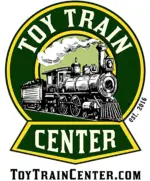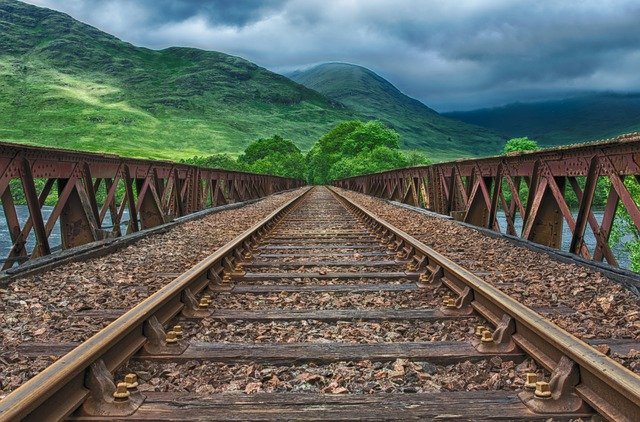Many different parts make up a train track. It isn’t just the rails, it includes everything that holds them into place. Without holding the rails perfectly in place the tracks are not safe for use. This article will explain what the individual parts of the train tracks are called and what purpose they serve. Hopefully, by the end, you will have a better understanding of how train tracks fit together and how they work.
The rail
First of all, and most commonly recognized, is the rail itself. The rail is made from steel and is what the wheels of the train sit on. The rail is typically in the shape of a capital I, this is because the top of the rail must take on more weight and stress; by making it wider the weight is more dispersed.
You can read more about why the rail needs to be that shape here.
Ballast bed
The ballast bed, or track bed, is the section of the frame that holds the ballast in place. Without the ballast bed, the ballast would simply slip away. In storms and flooding, the entire track would end up being washed away. This is not just dangerous but expensive.
Ballast
The ballast themselves are typically concrete blocks and rocks/stones. They weigh the track down and help hold it all in place. Without having a ballast, the track would take too much direct pressure and break. The ballast helps disperse the energy from the train. Ballasts can also keep the tracks from becoming overrun with weeds.
Railway tie
The wooden planks you might notice when looking at railway tracks are what is known as a railway tie, or a railway sleeper. They are commonly made from treated hardwoods and help hold the rails in place. The ties keep the rails equal distances apart at all sections of the track. If the railway ties weren’t there, trains would derail constantly. They are just as important as the rails themselves: without them, there would be no railway. Many people wonder why they are made of wood, not stone or metal; the reason being that wood is more forgiving and won’t break under stress, it will just slightly bend instead.
Rail clip
The rail clip is what fastens the railroad spike onto the railroad tie. They are there to ensure that they cannot come apart. If any of these parts fail, the train will derail. That’s why there are so many precautions in place. It is of paramount importance that the rail stays attached to the ties.
Railroad spike
Railroad spikes fasten the rail itself to the railroad tie. They are either in the shape of a spike, in which case they are hammered in; or they are the shape of a screw, and they are screwed in. Screws are much sturdier than spikes, as they are less likely to come back out. That’s why screws are more commonly used than spikes. Spikes were easier to produce and that’s why they used to be the norm.
Conclusion
Hopefully, this article has given you the information you needed about the individual parts of the train track. They are far more complicated than many people realize. Without the persistent layers of security, peoples’ lives would be at risk. If you would like to learn more about the parts of a train track, you can find it here.






